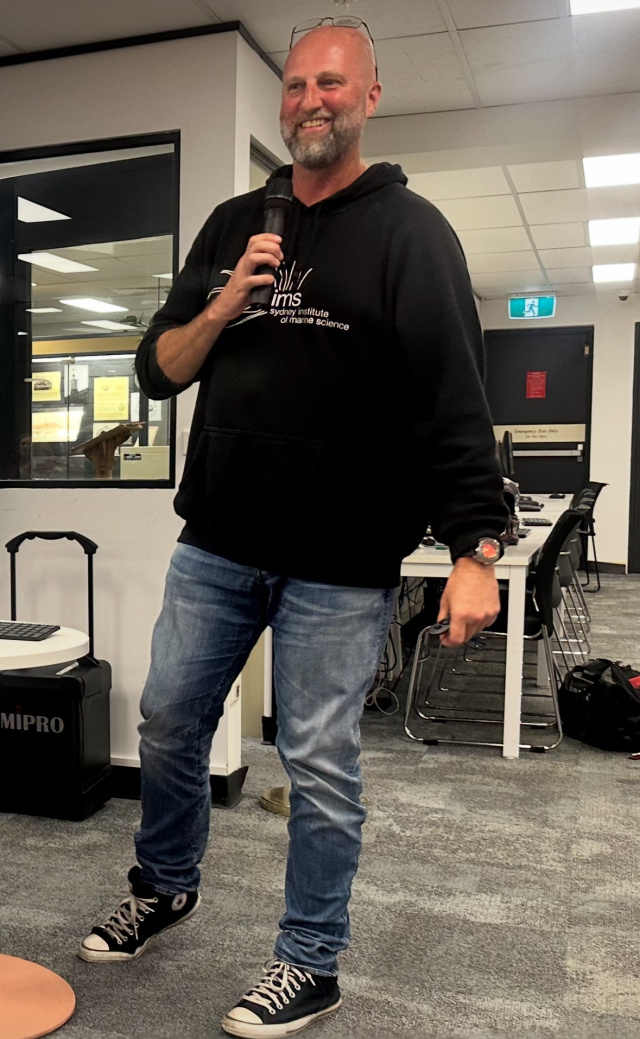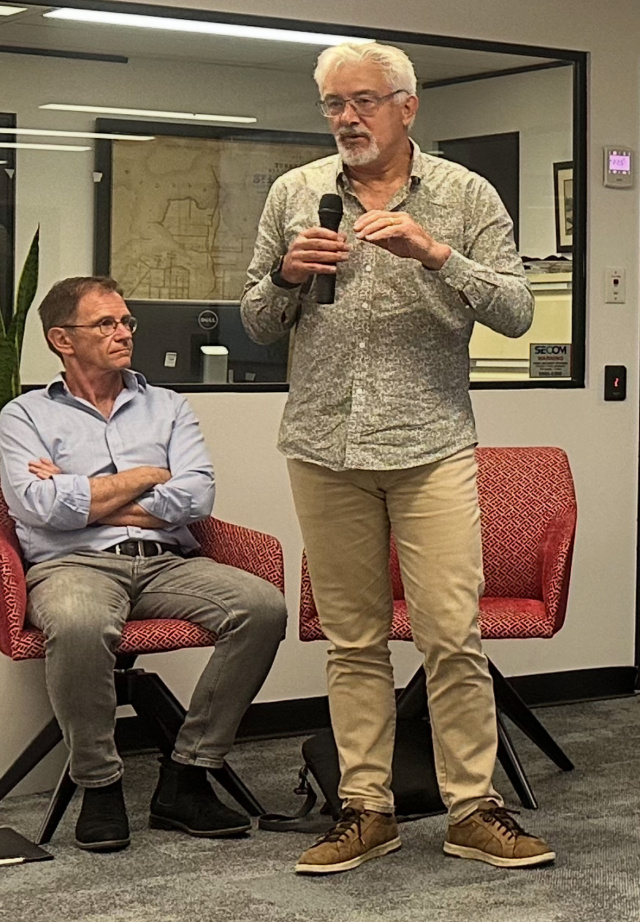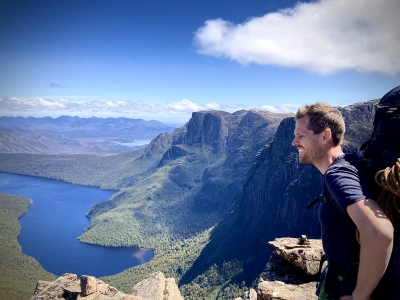Sydney event celebrates the city's wild wonders
'The Wild Wonders of Mosman' was a joint event hosted by the Mosman Environmental Foundation and Kuno.
The purpose was to learn about and celebrate the extraordinary diversity of life that exists in the heart of Sydney, to understand and be inspired by the dedicated efforts to conserve and restore this life, and to understand why conserving nature and connecting people with nature in the heart of cities is central to the broader challenge of the future of life on Earth.
Clare Taylor opened the event and explained the important role that the Mosman Environmental Foundation plays kickstarting and helping scale up environmental projects locally.

Brett Fenton the COO of the world leading Sydney Institute of Marine Science put Sydney harbour's marine biodiversity in context.
There is more fish species found in the harbour than the entirety of continental Europe.
Brett explained the suite of projects that SIMS is delivering in the harbour from replanting seagrasses, to saving White's seahorse, to bringing living seawalls back into heavily modified parts of the harbour.
The hope is that these ground-breaking efforts not just succeed in restoring the health of marine life in Sydney harbour, but for Sydney to also be a global leader in catalysing similar efforts in harbour cities across the planet.

Duncan Adams from the Wyargine Aquatic Reserve Friends is an extraordinary ocean swimmer who had just recently swum from Spain to Morocco.
In his ocean swimming - he had seen a lot of what was going on under the water, and seen stark differences between the wonderful abundance and diversity of marine life in Sydney's Cabbage Tree Bay Aquatic Reserve, and his local area.
Duncan's big dream is to create a new aquatic reserve that helps bring marine life back into the heart of the city.
The merit of this is for marine life for its own sake locally, but also because it is an accessible to city people to be able to easily snorkel, sea and understand the broader importance of marine conservation.

Leading ecologist Dr David Robertson beautifully explained the myriad of plant and animal species that still exist right in the heart of the city.
For example, there are two families of the extraordinary powerful Owl, Australia's largest owl species, that live in the suburb of Mosman.
However, there has been significant loss of habitat in this part of Australia in the past 200 years, and multiple pressures that make conservation efforts essential.

After Q&A with the panel, Kuno Director Dr Phill Pullinger brought the event to a close:
"It can be a mistake to believe that the frontline of nature’s future is only found in remote wild places and have nothing to do with busy life in the concrete jungle of our cities. Conserving and weaving nature into the lives of cities is absolutely crucial to the future of life on Earth
Firstly – cities are crucially important for nature in their own right. Nearly half of Australia’s threatened animal species live in our cities and towns. And this is where they are under the most intense pressure and every patch of bush, every patch of restored marine habitat, and every effort can make a critical difference to their future
Secondly – most people live in cities. Over 3 quarters of Australians live in our cities. It is the hearts and minds and decisions of people in the world’s cities that will decide the future.
And the last and related point is that people need to have a relationship with and connection with the natural world to understand it, to love it, and to take the actions needed to ensure its future, and for that to happen - nature needs to actually exist in our cities. That's why every effort here is crucial"

The event wrapped up with a story about a remarkable encounter that wildlife film-maker from Kuno Marcio (and Phill) experienced with a family of four powerful owls just in time to feature in Marcio's beautiful film on Birds of Mosman which was a beautiful and emotional conclusion to the event.
It can be a mistake to believe that the frontline of nature’s future is only found in remote wild places and have nothing to do with busy life in the concrete jungle of our cities. Conserving and weaving nature into the lives of cities is absolutely crucial to the future of life on Earth

Phill Pullinger
'The Wild Wonders of Mosman' was a joint event hosted by the Mosman Environmental Foundation and Kuno.
The purpose was to learn about and celebrate the extraordinary diversity of life that exists in the heart of Sydney, to understand and be inspired by the dedicated efforts to conserve and restore this life, and to understand why conserving nature and connecting people with nature in the heart of cities is central to the broader challenge of the future of life on Earth.
Clare Taylor opened the event and explained the important role that the Mosman Environmental Foundation plays kickstarting and helping scale up environmental projects locally.

Brett Fenton the COO of the world leading Sydney Institute of Marine Science put Sydney harbour's marine biodiversity in context.
There is more fish species found in the harbour than the entirety of continental Europe.
Brett explained the suite of projects that SIMS is delivering in the harbour from replanting seagrasses, to saving White's seahorse, to bringing living seawalls back into heavily modified parts of the harbour.
The hope is that these ground-breaking efforts not just succeed in restoring the health of marine life in Sydney harbour, but for Sydney to also be a global leader in catalysing similar efforts in harbour cities across the planet.

Duncan Adams from the Wyargine Aquatic Reserve Friends is an extraordinary ocean swimmer who had just recently swum from Spain to Morocco.
In his ocean swimming - he had seen a lot of what was going on under the water, and seen stark differences between the wonderful abundance and diversity of marine life in Sydney's Cabbage Tree Bay Aquatic Reserve, and his local area.
Duncan's big dream is to create a new aquatic reserve that helps bring marine life back into the heart of the city.
The merit of this is for marine life for its own sake locally, but also because it is an accessible to city people to be able to easily snorkel, sea and understand the broader importance of marine conservation.

Leading ecologist Dr David Robertson beautifully explained the myriad of plant and animal species that still exist right in the heart of the city.
For example, there are two families of the extraordinary powerful Owl, Australia's largest owl species, that live in the suburb of Mosman.
However, there has been significant loss of habitat in this part of Australia in the past 200 years, and multiple pressures that make conservation efforts essential.

After Q&A with the panel, Kuno Director Dr Phill Pullinger brought the event to a close:
"It can be a mistake to believe that the frontline of nature’s future is only found in remote wild places and have nothing to do with busy life in the concrete jungle of our cities. Conserving and weaving nature into the lives of cities is absolutely crucial to the future of life on Earth
Firstly – cities are crucially important for nature in their own right. Nearly half of Australia’s threatened animal species live in our cities and towns. And this is where they are under the most intense pressure and every patch of bush, every patch of restored marine habitat, and every effort can make a critical difference to their future
Secondly – most people live in cities. Over 3 quarters of Australians live in our cities. It is the hearts and minds and decisions of people in the world’s cities that will decide the future.
And the last and related point is that people need to have a relationship with and connection with the natural world to understand it, to love it, and to take the actions needed to ensure its future, and for that to happen - nature needs to actually exist in our cities. That's why every effort here is crucial"

The event wrapped up with a story about a remarkable encounter that wildlife film-maker from Kuno Marcio (and Phill) experienced with a family of four powerful owls just in time to feature in Marcio's beautiful film on Birds of Mosman which was a beautiful and emotional conclusion to the event.
It can be a mistake to believe that the frontline of nature’s future is only found in remote wild places and have nothing to do with busy life in the concrete jungle of our cities. Conserving and weaving nature into the lives of cities is absolutely crucial to the future of life on Earth
You might like...

Video content creation for Nature

Reconnecting with Nature: The Power of Children Planting Trees for Endangered Species

Embracing Ecotourism in Sibalom Natural Park

Kuno Podcasts
Newsletter
Sign up for stories about Nature and conservation from amazing people and groups from around the world. Brought to you by our social enterprise, Kuno.
